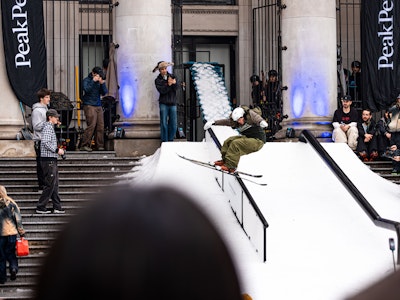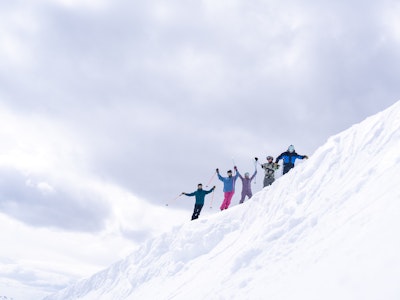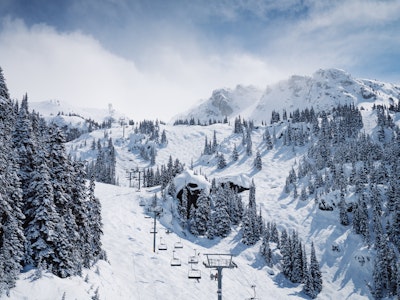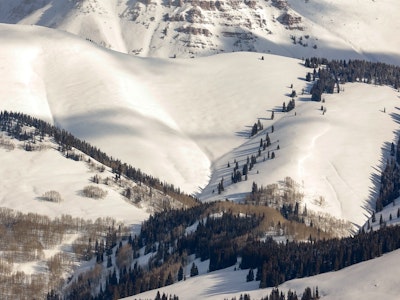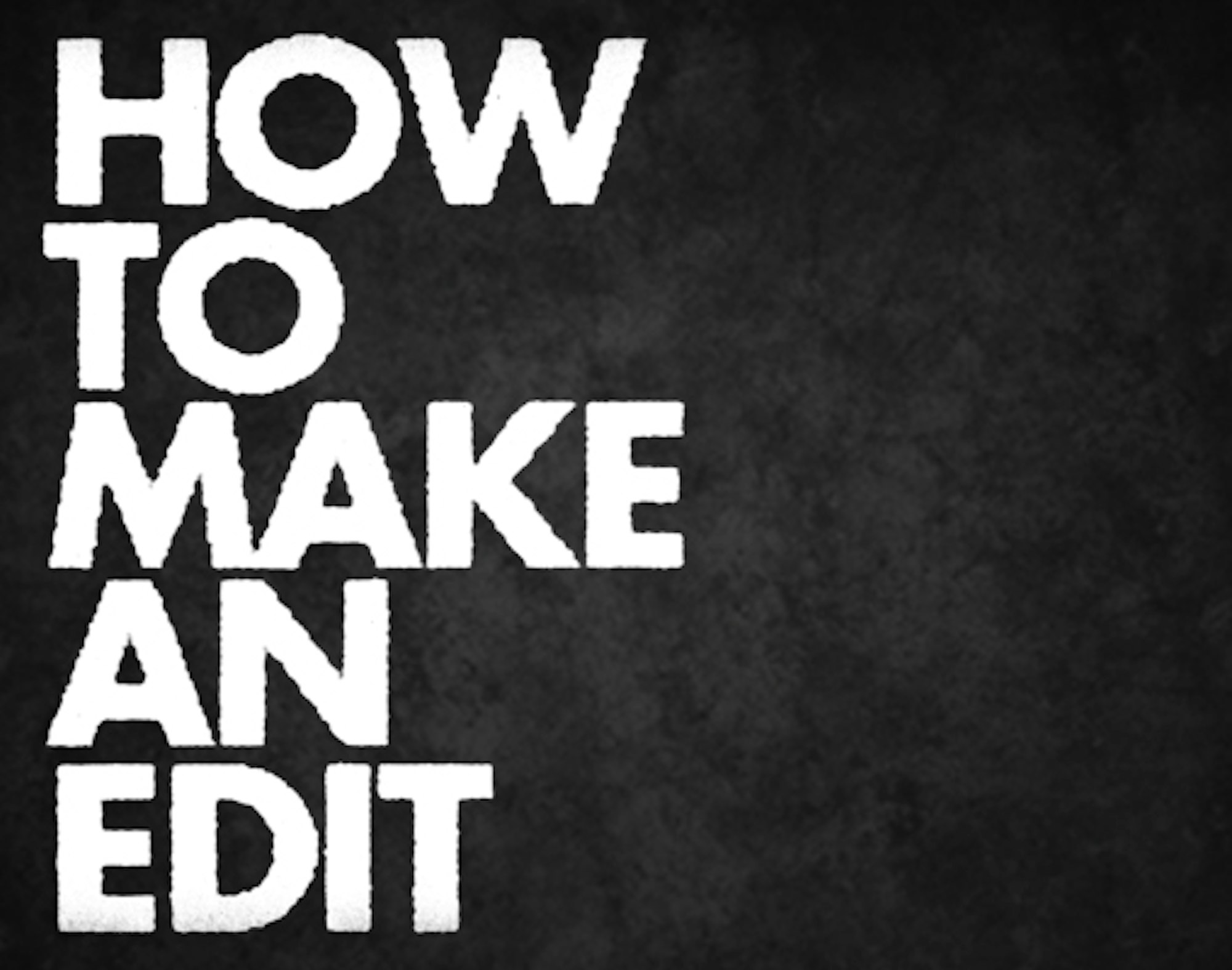So you want to make a badass skiing edit? One that will propel you into the limelight, racking up thousands of views? It’s simple: Just throw on your tall-T, throw another tall-T on top of that, fire off a few rounds from a handgun, slide a rail or two (preferably with bikini-laden chicks cheering you on in the background), overlay some gangster rap and voilà—you’re set.
If that doesn’t work, these tips will help you take your edit to the next level.
Have a plan
Heading to the hill, filling up a memory card with random footage and jumping blindly into Final Cut is not exactly a recipe for success, unless your name begins with T and rhymes with “om wallisch.” Most successful edits are born of a plan. One option is to tell a story. “Action edits these days are a dime a dozen,” says Josh Berman, founder of Level 1. “So many kids are killing it so hard in front of the lens that you need something that differentiates your edit from the rest. The best way to do it is to capture a vibe or tell a story and create some level of human interest or attachment for the viewer.”
Prefer to let your skiing do the talking? That’s fine too, so long as you package the contents appropriately. The single best piece of advice for an online edit? Keep it short and sweet. “It’s called editing for a reason,” asserts Mike Douglas of Switchback Entertainment, producers of Salomon Freeski TV. “You’re way better off to have the viewer wishing there was more than wishing it was over.” The unwritten rule of thumb for us Internet folk is keep it to three minutes or less.
Shooting
First off, it’s important to have a quality camera. It’s 2012. If Danny McShmanny can’t watch your slow motion face shot in at least 720p, he’s going to be pissed.
Mix up your shots. Stationary shots, panning shots, tracking shots, follow-cams, POV angles—try to dabble in a bit of everything. “I would say one of the biggest things I try to make sure to hit on is to capture a variety,” explains AJ Dakoulas of 4bi9 Media. “Whether that be with the style or angle of a shot or the feature itself, I find that it’s good to mix it up throughout to keep the viewer from losing interest.” Don’t be afraid to use filler shots either. This gives the viewer some sense of what’s going on around you and familiarizes the viewer with the setting.
Audio: The unsung hero
Pay. Attention. To. Audio. Creative use of audio on top of a well put-together piece will propel your edit into a category of greatness. Want a free lesson? Check out Michael Clarke’s 2011 short, Two Days in the Pipe at Breck With Simon Dumont and Justin Dorey. Similar audio effects can be achieved using Final Cut or a host of other editing software.
Securing music rights is a must. Sneaking around this matter or ignoring it is just plain uncool. Don’t start a bad habit by making edits with stolen music. If you’re a core backcountry skier, you have a special advantage in this department: Just strum some cheese on your acoustic guitar and open the video with a shot of yourself playing by a campfire so people know it’s you playing. Then slowly fade into the action.
You can also check out vimeo.com/musicstore for affordable tunes to incorporate in your video.
Time to post | Distribution
Once your masterpiece is crafted, it’s time to post to the web. The hottest spot to host your edit is Vimeo. Be sure to check out vimeo.com/help before uploading for great tips on how to compress your video for optimal playback. Ideally, you upload to YouTube as well. Be sure to give your video a catchy title. You’d be more inclined to click on “John Doe rips big lines, deep pow in Utah and Colorado – 2012/13 highlight reel” than “John Doe’s 2012/13 highlight reel,” right?
Once your video is live, reach out to the gatekeepers of influential media sites to inquire whether they’ll host your video; they’re just as anxious to share a great video with the masses as you are to get your name out there. How to get in touch? Those little “Contact Us” links at the footer of most websites is a great place to start. Of course, you’d also be well served to take advantage of skiing sites like Newschoolers.com (looking at you park rippers out there), or tetongravity.com (looking at you powder hounds). Once you distribute to these key outlets, the hard part is done. If your video lives up to the standards of content-hungry skiers, they’ll do the rest of the work for you by sharing the edit via word of mouth, through social media, etc.
Final Thoughts
Don’t cut shots before you land your trick. Carry extra batteries and memory cards. “If your camera can’t record it, you will have no proof, and thus it never happened,” says the king of POV, Andrew Whiteford. Make an effort to include some cool titles instead of resorting to Comic Sans. Embrace communities like Vimeo and YouTube as platforms to launch off. “Web edits are the perfect way to experiment with new techniques and get feedback from the public,” confirms Nick Martini of Stept Productions. And finally, despite all we’ve told you, remember that you’re your own boss. “There’s no official rulebook for making your videos, and that’s what makes it the most fun,” says Shane McFalls of Line Traveling Circus.
“People love to see something they have never seen before, so that’s what you’ve gotta do!” says Janne Korpela of the Finnish crew, Real Skifi. Perhaps easier said than done, but let it serve as food for thought.
*Want to watch great edits right now? Check out freeskier.com/videos, updated daily with the best skiing has to offer.

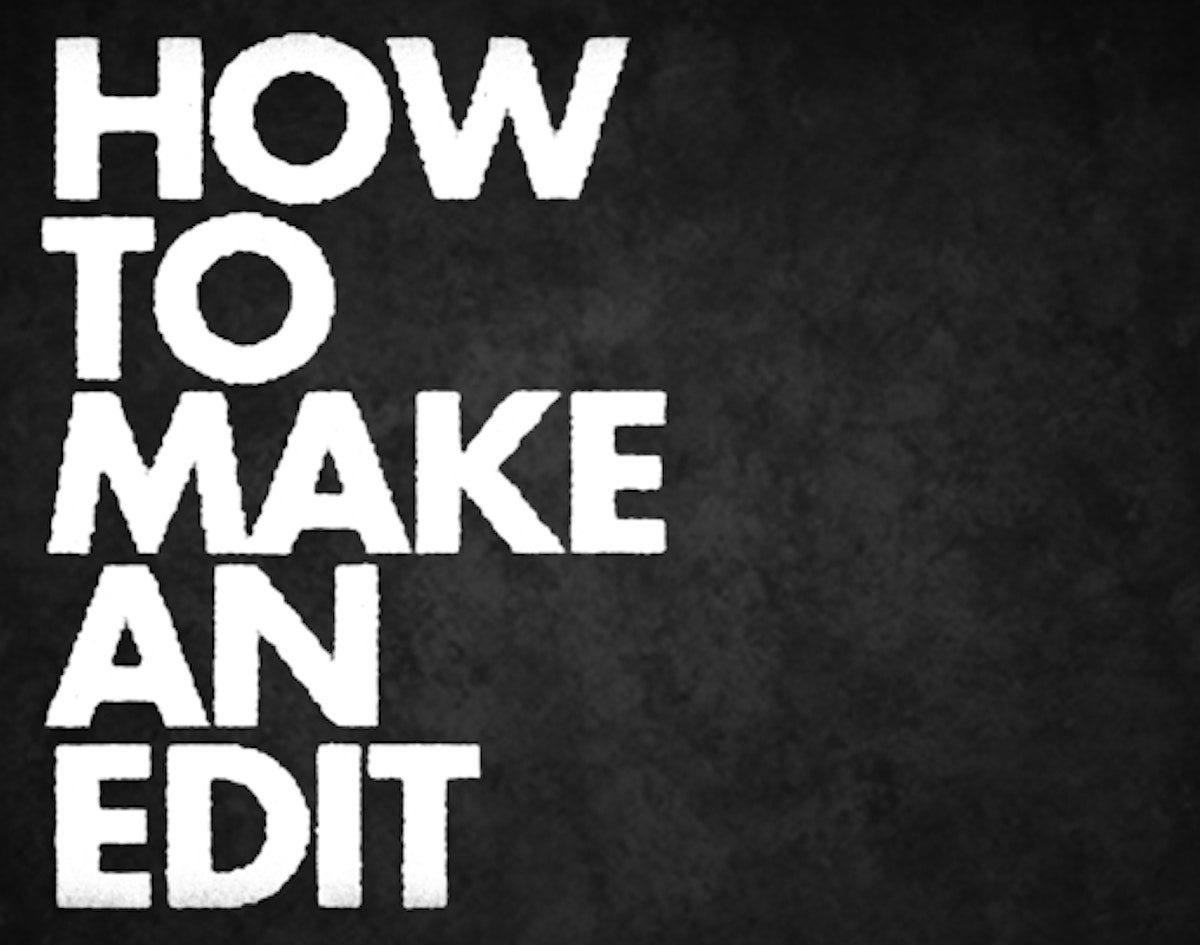
![[GIVEAWAY] Win a Legendary Ski Trip with Icelantic's Road to the Rocks](https://www.datocms-assets.com/163516/1765233064-r2r26_freeskier_leaderboard1.jpg?w=200&h=200&fit=crop)
![[GIVEAWAY] Win a Head-to-Toe Ski Setup from IFSA](https://www.datocms-assets.com/163516/1765920344-ifsa.jpg?w=200&h=200&fit=crop)
![[GIVEAWAY] Win a YoColorado X Coors Banquet Prize Package](https://www.datocms-assets.com/163516/1764877349-long-live-local-cooler-bag2.jpeg?w=200&h=200&fit=crop)
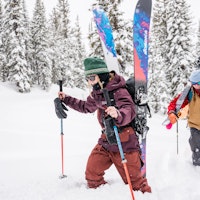
![[GIVEAWAY] Win a Legendary Ski Trip with Icelantic's Road to the Rocks](https://www.datocms-assets.com/163516/1765233064-r2r26_freeskier_leaderboard1.jpg?auto=format&w=400&h=300&fit=crop&crop=faces,entropy)
![[GIVEAWAY] Win a Head-to-Toe Ski Setup from IFSA](https://www.datocms-assets.com/163516/1765920344-ifsa.jpg?auto=format&w=400&h=300&fit=crop&crop=faces,entropy)


